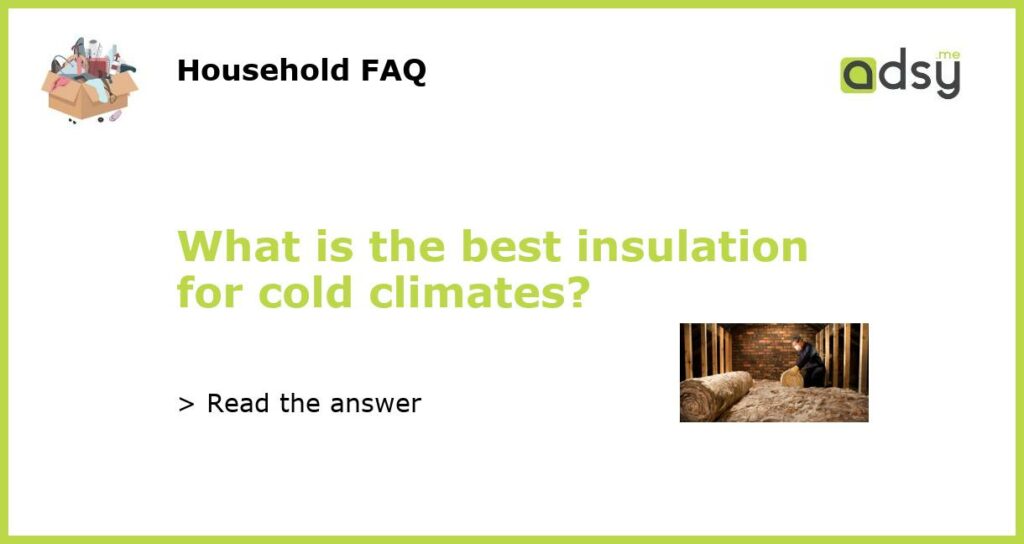Understanding the Importance of Insulation in Cold Climates
Cold climates can be challenging to live in, especially when it comes to keeping your home warm and comfortable. When the temperature drops, heat loss becomes a significant concern. This is where insulation comes in. Insulation acts as a barrier against cold air, helping to maintain a consistent temperature indoors. It is crucial to choose the right insulation for cold climates to ensure maximum energy efficiency and cost savings.
Types of Insulation Suitable for Cold Climates
When it comes to selecting insulation for cold climates, several options are available. These include:
- Spray foam insulation: This type of insulation is known for its excellent thermal performance and air sealing capabilities. It can expand and fill gaps effectively, making it ideal for cold climates where air infiltration is a concern.
- Fiberglass insulation: Fiberglass insulation is a popular choice for cold climates. It is affordable and provides effective thermal resistance.
- Cellulose insulation: Made from recycled paper materials, cellulose insulation offers excellent thermal performance, as well as soundproofing properties.
- Rigid foam insulation: Rigid foam insulation is highly resistant to water and provides excellent insulation value. It is commonly used in below-grade applications in cold climates.
Factors to Consider in Choosing the Best Insulation
When selecting insulation for cold climates, it is important to consider several factors:
- R-Value: The R-value measures the insulation’s thermal resistance. A higher R-value indicates better insulation performance. In cold climates, a higher R-value is recommended to combat the cold temperatures.
- Air sealing: Ensuring that insulation minimizes air leakage is crucial in preventing heat loss. Look for insulation materials with good air sealing properties.
- Moisture resistance: Cold climates often come with high humidity and moisture levels. Choosing insulation materials that are resistant to moisture can help prevent mold and mildew growth.
- Sustainability: Consider insulation materials that have a minimal impact on the environment, such as those made from recycled or renewable materials.
- Installation difficulty: Some insulation materials require professional installation, while others can be installed as a DIY project. Consider your skill level and budget when choosing the right insulation type.
Recommended Insulation for Cold Climates
Based on the factors mentioned above, the following insulation materials are recommended for cold climates:
- Spray foam insulation: Spray foam insulation provides the highest R-value per inch and offers excellent air sealing properties, making it ideal for cold climates. However, professional installation is recommended.
- Cellulose insulation: Cellulose insulation is eco-friendly, provides good air sealing, and has high moisture resistance. It is a cost-effective option for cold climates.
- Rigid foam insulation: Rigid foam insulation is highly efficient and offers excellent moisture resistance. It is commonly used in basements and crawlspaces in cold climates.
Conclusion: The Best Insulation for Cold Climates
Choosing the best insulation for cold climates is essential for maximizing energy efficiency, reducing heat loss, and ensuring a comfortable living environment. Spray foam insulation, cellulose insulation, and rigid foam insulation are recommended options for cold climates. Consider the specific needs of your home, such as R-value requirements, moisture resistance, and air sealing capabilities, to make an informed decision. Consulting with a professional contractor can help you determine the most suitable insulation option for your cold climate region.

